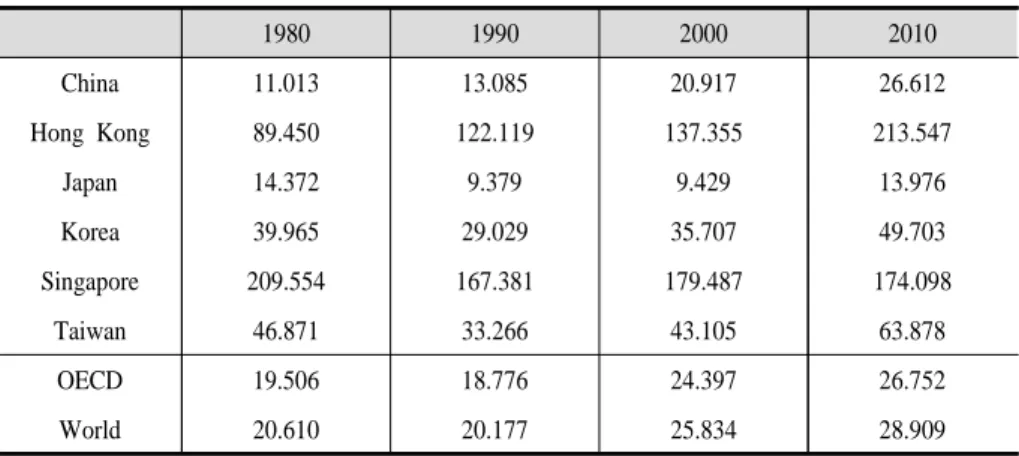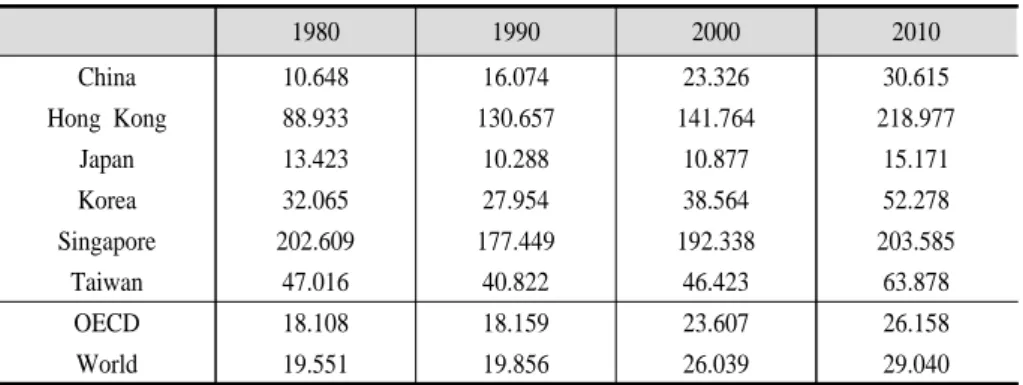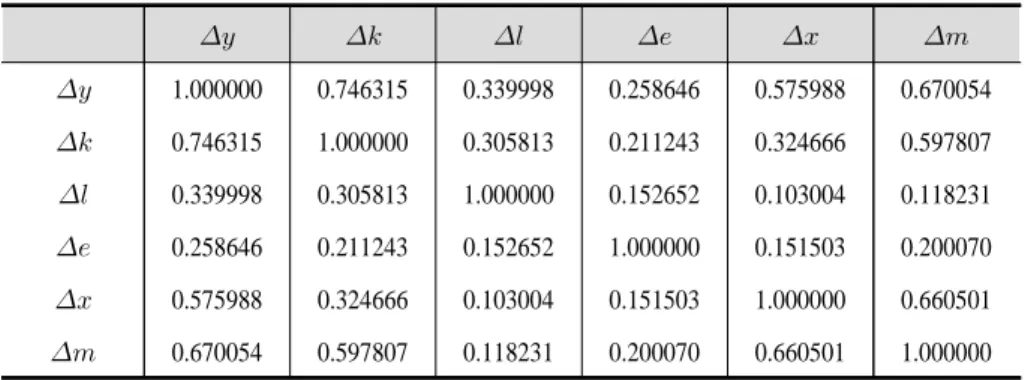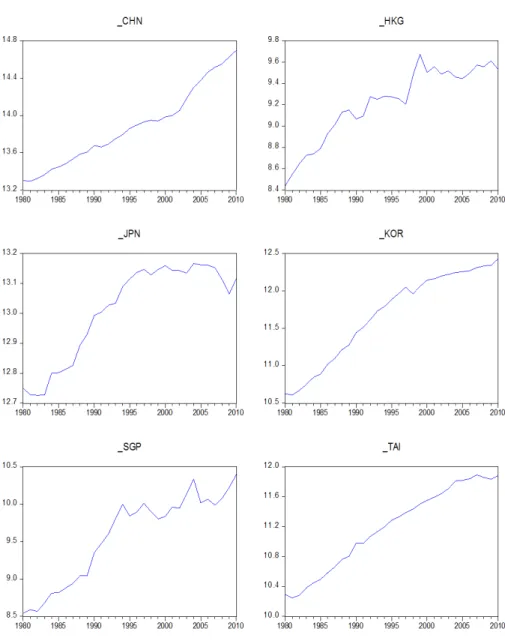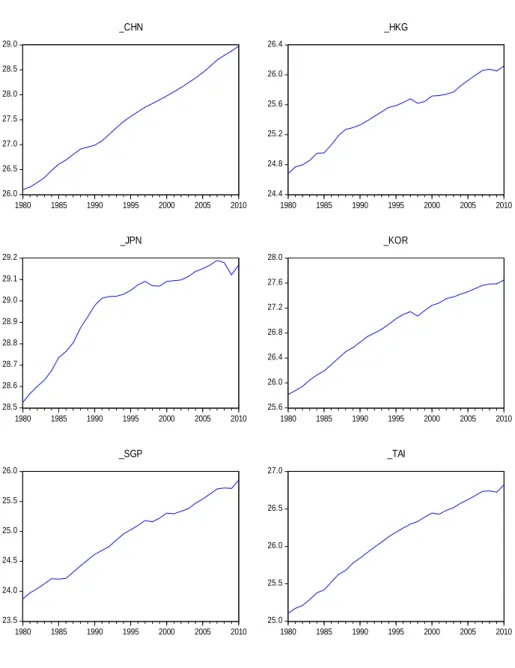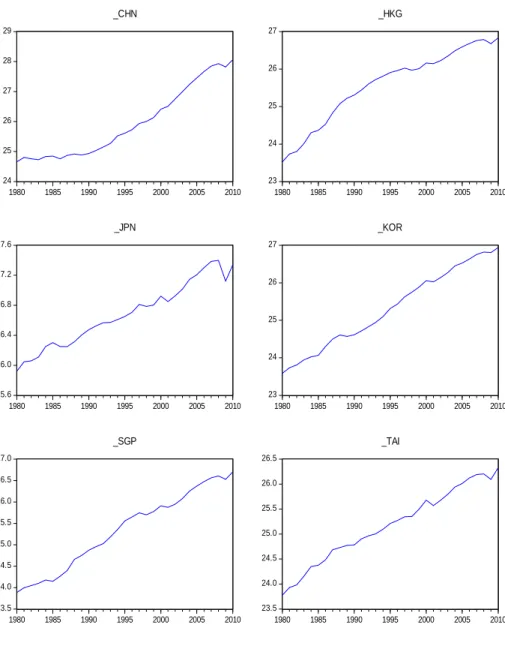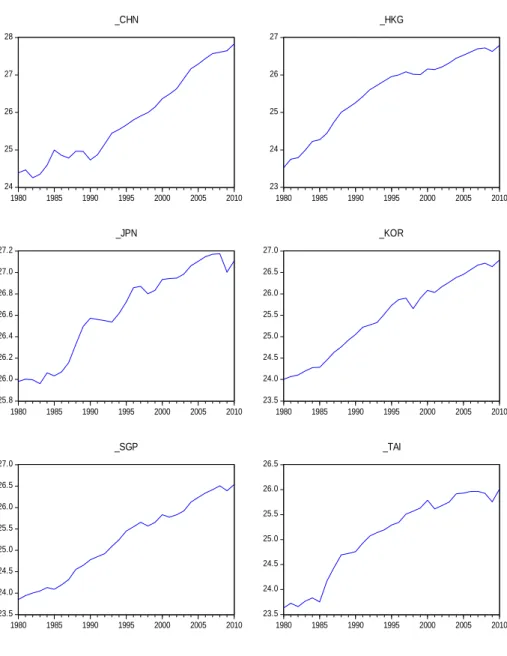In recent years, the causal relationships between energy consumption and economic growth and between energy consumption and international trade, exports and imports have been studied. Studies on the relationship between energy consumption and economic growth have been conducted using various time series analysis methods on a variety of aspects. An analysis on the relationship between energy consumption and economic growth can therefore provide information on whether an energy saving policy negatively affects economic growth, and these studies offer important implications for the energy policy of a particular country or region.
According to Ozturk (2010), the relationship between energy consumption and economic growth influences energy policy according to the following four hypotheses. First, the growth hypothesis suggests a unidirectional causality that runs from energy consumption to economic growth. Third, the feedback hypothesis is a two-way causality between energy consumption and economic growth, suggesting that energy consumption and economic growth are jointly determined and simultaneously influenced.
Fourth, the neutrality hypothesis suggests no causality between energy consumption and economic growth, arguing that neither conservative nor expansionary energy consumption policies affect economic growth. The analysis of the causal relationship between energy consumption and trade in these countries is thus different from the previous analysis that focused on countries that did not have export-led economic growth. The recent multi-country studies on the causal relationship between energy consumption and economic growth include Apergis and Payne (2009a, 2009b, 2009c), Lee and Chang (2008), Narayan and Smyth (2008), Huang et al.
Apergis and Payne (2009a) and Narayan and Smyth (2008) found that the causality runs from energy consumption to economic growth, and Apergis and Payne (2009c) found the bidirectional causality between energy consumption and economic growth. 2008) found that there is a causal relationship between economic growth and energy consumption. The causal relationship between energy consumption and trade (i.e. exports and imports) has been analyzed in studies such as those of Lean and Smyth (2010a, 2010b), Narayan and Smyth (2009) and Sardorsky (2011). If so, I use panel cointegration techniques to examine the relationship between energy consumption and trade.
Panel cointegration tests have recently been used by a number of authors to examine the relationship between energy consumption and output (Apergis and Payne. Data on energy consumption for these countries except Taiwan are from the World Bank (2013), World Development Indicators online database Time series graphs of the natural logs of energy consumption for each of the countries is shown in Fig.
In the case of Japan, energy consumption has fluctuated since 2000, showing a downward trend in recent years. In China, despite high GDP growth (of the order of 10%), energy consumption growth was only 4.8%. In most countries, exports and imports have grown much faster than GDP or energy consumption.
Therefore, the analysis of the causal relationship between trade (exports and imports) and energy consumption in these countries is very useful.

Empirical Results
Unit root tests
Cointegration tests
Three of the within-dimension statistics indicate cointegration at the 5% level, and one of them indicates cointegration at the 10% level. Three of the within-dimension statistics indicate cointegration at the 5% level and one of them indicates cointegration at the 10% level. Automatic lag length selection based on SIC with a maximum lag of 5 Newey-West automatic bandwidth selection and Bartlett kernel.
Automatic layer length selection based on SIC with a maximum delay of 5 Newey-West automatic bandwidth selection and Bartlett kernel.
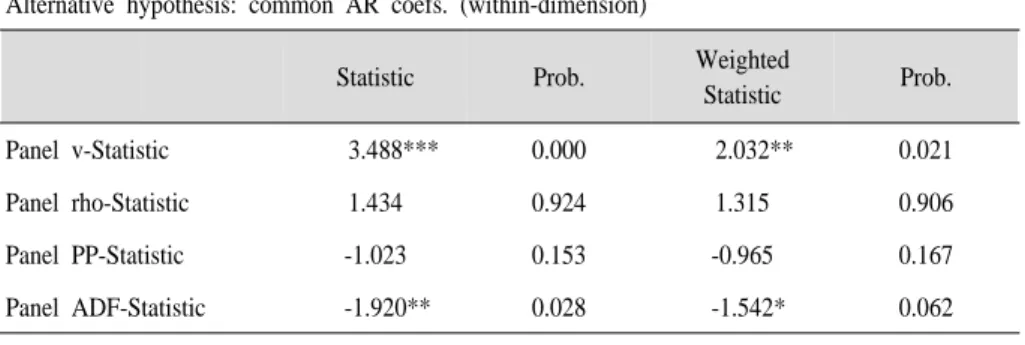
VECM Tests
For the causal relationship between output and energy consumption, there is evidence of short-term causality between energy consumption and output. Moreover, there is short-run causality between energy consumption and exports at the 10% significance level, but there is no short-run causality between exports and energy consumption.1). This is because these countries have achieved export-led economic growth and these export industries required stable energy consumption.
Stable energy supply to these countries can contribute to boosting exports and economic growth. But there is no short-term causality from energy consumption to import and from import to energy consumption. These results show that there is no direct causal relationship between imports and energy consumption.
One of the reasons is that the quantity of energy imports depends on the price of energy. Although an increase in energy consumption leads to an increase in the amount of imported energy, the amount of energy imported should not increase with a decrease in the price of energy. However, there was no evidence of short-term causality running from energy to production or production to energy.
Long-run output elasticities are estimated using ordinary least squares (OLS), generalized least squares (GLS) or fully modified OLS (FMOLS; Pedroni, 2001). According to the results of FMOLS, the long-run elasticity of capital to GDP is 0.458, which means that a 1%. In the long run, this model shows that labor and capital played a major role in economic growth.
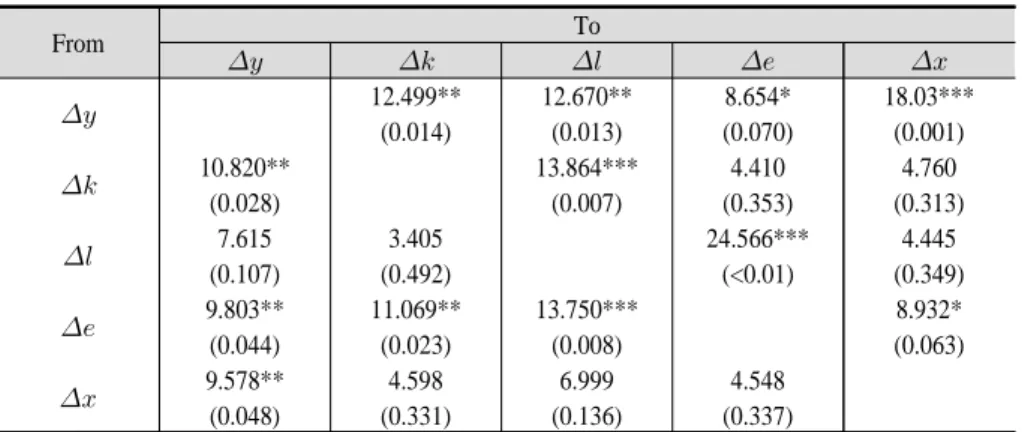
Conclusion
Therefore, environmental and energy policies that support stable energy consumption in this region have a positive impact on economic growth. Energy or environmental policies designed to limit energy consumption could negatively impact exports in this region and have an unintended indirect effect on this region's economic growth. In the long run, energy consumption has increased with economic growth in East Asian countries, and stable energy consumption has supported economic growth and exports.
Therefore, greenhouse gas abatement policies that limit energy consumption may affect that region's exports and, in turn, may slow economic growth in that region. Payne, (2009a), “Energy consumption and economic growth in Central America: evidence from a plate cointegration and error correction model,” Energy Economics, Vol. Payne, (2009b), “Energy consumption and economic growth: evidence from the Commonwealth of Independent States, Energy Economics, Vol.
Zhu, (2008), “Economic growth and energy consumption revisited – evidence of linear and nonlinear Granger causality.” Energy Economics, Vol. Chang, (2008), “Energy consumption and economic growth in Asian economies: a more comprehensive analysis using panel data”, Resource and Energy Economics, Vol. Chen, (2008), “Causality between energy and income in OECD countries revisited: the key role of capital goods”, Energy Economics, Vol.
Asafu-Adjaye, (2007) "Energy Consumption, Economic Growth and Prices: A Reassessment Using the VECM Panel for Developed and Developing Countries". Mehrara, M., (2007) “Energy consumption and economic growth: the case of oil exporting countries,” Energy Policy, Vol. Prasad, (2007) “Electricity consumption in the G7 countries: a panel cointegration analysis of the elasticity of residential demand,” Energy Policy, Vol.
Payne, J.E., (2010) "Exploring international evidence on the causal relationship between energy consumption and growth", Journal of Economic Studies, Vol. Sadorsky, P., (2009a) “Renewable energy consumption, CO2 emissions and oil prices in the G7 countries,” Energy Economics, Vol. Soytas, (2007) “Income growth and energy consumption in six developing countries,” Energy Policy Vol.
